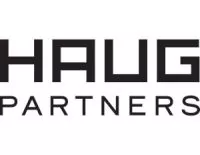Authored by David Shotlander, Aakruti Vakharia, Ralph Labaton, and Daniel Lichtenauer1
I. INTRODUCTION
No pharmaceutical antitrust decision has had more impact than the Supreme Court's 2013 decision in Federal Trade Commission v. Actavis, a decision which officially defined the term "reverse payment settlements," confirmed that such settlements may be subject to antitrust liability, and denied instant condemnation of such settlements.2 Actavis has made every Hatch-Waxman patent litigation settlement an antitrust event, and, to this day, spurs sprawling, fact-intensive litigation, which most often results in another settlement.
This article documents the history of post-Actavis cases. Since Actavis, thirty five products by our count have been the subject of one or more reverse payment suits brought by some combination of direct purchasers, end/third-party payors, consumers, and/or the FTC. The FTC has prevailed in one such case (which also included a settlement) and settled four others. Private plaintiffs have yet to win any such case, have suffered losses in seven (three by verdict, four by motion), have ten cases ongoing, and have settled twenty three, at least in part.3 Defeating a reverse payment claim on a motion to dismiss is difficult, and upholding that dismissal is even more difficult. To date, there have only been three such dismissals (reversals omitted). Even more difficult winning a case for damages has yet to occur.
What suffices as a plausible "payment" is an expansive list, but the list is not limitless. What qualifies as "large" is still an open question, and proof of delay/injury, anticompetitive harm in a relevant product market, and lack of procompetitive justification have all become critical issues in private actions. Moreover, the antitrust cases that feature reverse payment claims are often accompanied by allegations of other anticompetitive conduct, such as patent fraud, Orange Book abuse, sham patent litigation, sham petitioning, patent thickets, and more.4
II. THE END BECOMES THE BEGINNING: IT STARTS WITH A SETTLEMENT
When bringing new "brand" drugs to market, companies must file a New Drug Application (NDA) with FDA, which incorporates the results of years of expensive research and development work to document the safety and efficacy of the drug. During development, brand companies often obtain one or more patents, which provide exclusive rights to the drug for a period of years.5
The Hatch-Waxman Act aims to incentivize the development of generic drugs by providing a shortcut.6 While brand drugs require an NDA to get FDA approval, generics file an Abbreviated New Drug Application (ANDA) demonstrating that the generic product is therapeutically equivalent to the brand product. In addition to certifying therapeutic equivalence, ANDA filers must certify that the generic, upon launch, will not infringe patents covering the brand that are listed in the FDA Orange Book. Commonly, the generic files a Paragraph IV (PIV) certification claiming that brand's patents are invalid, unenforceable, and/or not infringed by the generic such that the patents are not a bar to an immediate launch upon approval. The first ANDA filer with a PIV certification for a particular drug may receive 180 days of generic marketing exclusivity from FDA, further incentivizing generic entry. Filing a PIV certification, however, is considered an artificial act of patent infringement and under the Act,7 if the brand files a lawsuit against the ANDA filer within 45 days of receiving a PIV certification, the lawsuit triggers a "30-month stay" during which FDA cannot approve the ANDA while the lawsuit is pending.
Hatch-Waxman settlements typically involve a compromise in which the brand agrees to allow generic entry prior to expiration of any patents, but not as soon as if the generic would have prevailed, potentially allowing for immediate entry. A "reverse payment" or "pay for delay" settlement occurs where the brand (patentee) pays the generic (infringer) to accept a later date than it otherwise would, but-for the payment.
Prior to the Supreme Court's Actavis decision, the application of antitrust law to Hatch-Waxman settlements was an open question. The Second, Eleventh, and Federal Circuits found patent settlements immune from antitrust scrutiny, provided the settlements did not delay generic entry beyond the scope of the patents.8 In contrast, the Third Circuit assumed antitrust liability, applying a "quick look" analysis to reverse payment agreements and finding that "any payment from a patent holder to a generic patent challenger who agrees to delay entry into the market as prima facie evidence of an unreasonable restraint of trade."9
In Federal Trade Commission v. Watson, the Eleventh Circuit affirmed dismissal of an FTC complaint alleging that Solvay paid Watson to delay entry of generic Androgel, finding the generic would still have entered the market prior to expiration of the patents.10 The Supreme Court reversed, holding that reviewing Hatch-Waxman settlements under patent law alone is too narrow and may permit anticompetitive settlements. To determine whether a settlement is anticompetitive, courts instead must examine whether "the specific restraint at issue has the potential for genuine adverse effects on competition."11 If these anticompetitive consequences prove to be unjustified, the settlements may violate antitrust law. The Court noted that where a payment is both large and unjustified, "the antitrust laws are likely to forbid the arrangement."12 Finally, the Court held that these settlements are to be analyzed under a rule-of-reason analysis.13 The Court acknowledged that every situation is different and left "to the lower courts the structuring of the present rule-of-reason antitrust litigation."14 Writing for a three-justice dissent, Chief Justice Roberts cautioned that the majority's framework ignores that the underlying Hatch-Waxman litigation may have involved a valid patent that allows a brand to exclude competition and would otherwise prove difficult for lower courts to resolve the suits that would follow.15
III. HOW COURTS DEFINE REVERSE PAYMENTS
Plaintiffs and lower courts alike have adopted varied and creative interpretations of what constitutes a payment under Actavis. Alleged payments include, at the most basic level, direct cash payments.16 Other payments have included imbalanced side deals and debt relief, including, for example: product promotion rights awarded to the generic17; discounted API or generic supply18; a separate (one-sided) litigation settlement19; rights to another product20; branded product at no cost21; and other business collaborations22, to name a few.
Allegations of "payments" long ago evolved beyond just cash and side deals. For example, plaintiffs have alleged that settlement provisions in which brands promised not launch an authorized generic23 (no-AG agreements) were disguised reverse payments. Originally, district courts in New Jersey and Rhode Island dismissed those claims, finding that there was no cash equivalent provided to the generic, but the First and Third Circuits reversed, holding that non-cash consideration could still provide an exchange of value to the generic that would effectively be a payment.24 Since 2016, courts around the country have found no-AG agreements to be payments under Actavis.25 In fact, since 2017, courts have further accepted implied or de facto no-AG agreements as a potential source of payment, even where the settlement agreement contains no express agreement not to launch an AG,26 or only a partial no-AG agreement.27 Subsequent cases expanded the value from no AG competition to delayed entry of other generic products.28
Plaintiffs have also alleged other settlement provisions, which appear facially pro-competitive, to in fact be disguised compensation for the generic. For example, plaintiffs have alleged that a provision providing a patent license for an unrelated drug is a payment. Such licensing was ruled by the district court not to constitute a payment, but the Third Circuit, in AbbVie, disagreed, holding that Actavis considers whether a transfer of value is unjustified, not whether it is procompetitive.29 Similarly, in Humira, plaintiffs alleged that generics obtained early European market entry in exchange for delayed U.S. market entry.30 The district court dismissed the case, finding no alleged payment.31 In contrast to the Third Circuit, the Seventh Circuit affirmed, finding that an agreement that permits earlier entry in one region and later entry in another is specifically permitted by Actavis.32
Another provision in plaintiffs' crosshairs is the acceleration clause. Acceleration clauses ensure that the first-filer maintains its place in line by allowing earlier market entry if other generic products launch. This could be the critical incentive that enables a generic to settle without risk of losing its place in line, and may result in earlier generic entry than absent an accelerator, which is what prompted the Actos court to dismiss such an alleged payment in 2015.33 Such clauses, however, could potentially disincentivize other generic challenges to the benefit of the settling generic, which the Xyrem court ruled in 2021 to be an alleged payment.34
IV. ALLEGATIONS BEYOND THE PAYMENT QUESTION
A. What Constitutes a "Large" Payment?
There is no clear standard for what makes a payment sufficiently "large" to trigger antitrust scrutiny. The Supreme Court made clear in Actavis that an alleged payment must be greater than litigation cost savings, which is an example of an unproblematic payment, thus establishing a de facto floor, but did not otherwise provide clear guidance.35 The question was further examined in Cephalon, where the district court ruled that the alleged payment must be enough to induce the generic to stay off the market.36 In Namenda, the district court denied defendants' motions to dismiss where the payment at issue conferred ten times the saved litigation costs, stating "[a] reasonable jury could find that a reverse payment to a generic manufacturer that comes close to or exceeds the expected profits to be earned by prevailing in the patent litigation could induce a generic manufacturer to forfeit its claim."37 In Lipitor, plaintiffs alleged that Pfizer and Ranbaxy entered into side deals that amounted to an unspecified payment from the brand to the generic.38 The Third Circuit held that the plaintiffs plausibly pled a "large and unjustified payment," and that plaintiffs need not plead an exact payment amount.39
B. Actual, Competition-Injurious Delay
The FTC can win a reverse payment case without proving an actual delay in generic competition, but the same is not true for private plaintiffs. Indeed, without proving whether the generic drug at issue would have launched earlier absent the settlement, private plaintiffs cannot prove injury.40 This was the case in Nexium,41 where plaintiffs claimed that AstraZeneca's settlement with Ranbaxy delayed generic entry, forcing them to pay an overcharge. Because Ranbaxy had not yet received FDA approval, however, the plaintiffs failed to establish causation.42 The jury found that AstraZeneca had the requisite market power and found a "large and unjustified" reverse payment that was anticompetitive,43 but concluded that AstraZeneca would not have entered earlier and thus the settlement caused no injury.44
Plaintiffs face an uphill battle claiming anticompetitive injury where FDA approval is absent prior to the entry date in a settlement. In Asacol,45 for example, plaintiffs argued that the generic would have launched prior to the conclusion of the patent litigation ("at risk") absent the settlement. The district court dismissed the claim for lack of standing, noting that the generic had not received FDA approval and finding that plaintiffs could not allege whether the settlement or lack of FDA approval caused any alleged injury.46 Likewise, in Solodyn the district court dismissed claims where the generic did not receive FDA approval until after the settlement-specified entry date, noting "FDA's approval, not an agreement with [the brand], was the limiting factor in [the generic's] ability to bring [the generic product] to market."47 It should be noted, however, that lack of approval is not dispositive. In EpiPen,48 and more recently in Seroquel49 and Amitiza50, courts denied defendants' motion to dismiss under similar circumstances, finding plaintiffs' allegations of delay sufficient to infer a link between the settlement and FDA's delay in approving the ANDA.
Even with FDA approval, proving that but-for the alleged settlement, a challenged ANDA would have launched, implies that the generic would have ultimately won the patent suit. While allegations of weak patents are accepted as true on a motion to dismiss, the Seroquel court dismissed a reverse payment claim where plaintiffs "[did] not allege . . . any facts that plausibly imply that the [] patent had weaknesses that would have enabled Accord (the generic) to prevail at trial on its invalidity defenses; nor [did] they allege any facts that plausibly imply that AstraZeneca (the brand) or Accord believed that Accord could prevail at trial."51 In later stages, such as summary judgment or trial, a reverse payment defendant may demonstrate, through patent-related evidence and expert testimony, that the patentee would have prevailed, or that an alternative settlement (based on the patent merits) would not have yielded an earlier date. This was the basis for summary judgment in Wellbutrin.52 This is a factually-intensive dispute in many reverse payment cases, and one that often spurs a patent litigation within the antitrust litigation—something the Supreme Court, in the context of an FTC case, suggested would not be necessary.53
C. Proof of Market Power and Insufficient Competitive Alternatives
To succeed on a rule-of-reason claim, a plaintiff must prove that the defendant has/had sufficient market power in the product at issue.54 Market power may be demonstrated by direct evidence of restricted output and supracompetitive prices, or by circumstantial evidence showing that the defendant owns a dominant share in a defined product and geographic market, and that there are significant barriers to entry. In HIV, the district court addressed whether plaintiffs must show both supracompetitive prices and restricted output to establish direct evidence of market power.55 The court held that there were fact disputes as to whether defendants restricted output and as to the relevant product market and that gross margins are not dispositive of market power.56 At trial, defendants focused on Teva's "early" generic entry and Gilead's lack of market power, pointing to an "explosion of new drugs for HIV treatment" over the last fifteen years.57 Though the verdict form provides little insight into the jury's reasoning, the quick deliberation and verdict for defendants suggests that defendants' focus on competitive alternatives weighed upon the outcome.
D. Under Actavis, Procompetitive and Justified Settlements Are Lawful
Under the rule-of-reason, it is not enough for a plaintiff to prove that a reverse payment settlement delayed generic entry—a plaintiff must also prove that the settlement was both unjustified and caused anticompetitive harm within a relevant geographic and product market. In Bystolic, plaintiffs alleged reverse payment settlements that included side deals totaling over $15M in exchange for the generic's delay to market. The plaintiffs, however, did not plausibly allege that the side-deal "payments" would be unjustified or that the payments exceeded the fair market value of the products delivered or services rendered by the generic. In holding that the plaintiffs did not raise a reasonable inference that the agreements were unjustified, the court found that "conduct that is consistent with and equally explicable by a pro-competitive justification—by each defendant acting in its own independent interest—and that raises only the possibility of anticompetitive conduct is not sufficient to state a claim . . . ."58
Existence of a reverse payment does not preclude a procompetitive settlement. In the case of Opana, the FTC prevailed based on a finding that Endo paid Impax a large and unjustified payment, but in the private case, a jury found the same settlement not to be unlawful. The Opana jury found Endo had market power and made a reverse payment to Impax, but nevertheless sided with Endo because it found the settlement was not unreasonably anticompetitive.59 Endo's prevailing argument focused on the strength of Endo's later-issued patents (which have held up against other generic challengers), and argued the deal was procompetitive because it was the only way for an Opana generic to enter the market.
V. TAKEAWAYS
Thus far, 22 reverse payment cases brought by private plaintiffs have resulted in antitrust settlements, four have resulted in dismissals or summary judgment, three in defense verdicts and zero plaintiff verdicts. Five FTC cases have resulted in settlements, and one also included an FTC verdict. As was predicted ten years ago, once a suit ensues, it is unlikely that either side will avoid fact-intensive and combative discovery. Significant deviations in the facts, the strategies, and the courts have set these cases on considerably different paths. Pharmaceutical and life science companies should be aware that settling Hatch-Waxman litigation may shift risk from a patent case to a potential antitrust case. This risk can be mitigated by litigating to a verdict and otherwise by calling for antitrust advice during the course of negotiations. Furthermore, the merits – the strength of the patent, the terms of the settlement, and the effect on competition – matter. Finally, while no company wants to be a defendant a private reverse payment litigation, it is noteworthy that the current scorecard on decided outcomes reads seven to zero, defendants.
Footnotes
1. We would like to thank Haug Partners associate Nisha Gera and summer associates Anjali Dhamsania, Thomas Feil, and Matthew Kelly for their help conducting research for this article.
2. 570 U.S. 136 (2013).
3. Nine products, because they were the subject of suits brought by multiple plaintiff groups (including the FTC) and/or against multiple defendants, fall into more than one category. Opana, for example, falls into four.
4. See e.g. In re Lipitor Antitrust Litig., 868 F.3d 231, 245 (3rd Cir. 2017) (in addition to challenging the settlement, Plaintiffs alleged that Pfizer engaged in monopolization via fraudulent patent procurement, false Orange Book listings, sham litigation, and sham citizen petitions.); In re Humira Antitrust Litig., 465 F. Supp. 3d 811 (N.D. Ill. 2020), aff'd sub nom., Mayor of Balt. v. AbbVie Inc., 42 F.4th 709 (7th Cir. 2022) (Plaintiffs alleged that AbbVie created a "minefield" of over 100 Orange Book patents on Humira, allegedly to deter challenges).
5. 35 U.S.C. § 101 et seq.
6. Hatch-Waxman Act amendments to the Federal Food, Drug, and Cosmetic Act, 21 U.S.C. § 301 et seq.
7. Id.
8. See In re Ciprofloxacin Hydrochloride Antitrust Litig., 544 F.3d 1323 (Fed. Cir. 2008), cert. denied, 557 U.S. 920 (2009); In re Tamoxifen Citrate Antitrust Litig., 429 F.3d 370 (2d Cir. 2005), cert. denied, 551 U.S. 1144 (2007); Schering-Plough Corp. v. FTC, 402 F.3d 1056 (11th Cir. 2005); Valley Drug Co. v. Geneva Pharms., Inc., 344 F.3d 1294 (11th Cir. 2003), cert. denied, 543 U.S. 939 (2004).
9. In re K-Dur Antitrust Litigation, 686 F.3d 197, 218 (3d Cir. 2012).
10. FTC v. Watson Pharms., Inc., 677 F.3d 1298, 1315 (11th Cir. 2012), rev'd and remanded sub nom Actavis, 570 U.S. 136.
11. Id. at 153.
12. Id. at 158.
13. Id. at 159-160.
14. Id. at 160.
15. Id. at 164.
16. In re Cipro Cases I & II, 348 P.3d 845 (Cal. 2015) (between 1997 and 2003, Bayer allegedly paid Barr $398.1M to stay off the market until patent expiration).
17. Actavis, 570 U.S. 136, 145 ("Solvay agreed to pay millions of dollars to each generic—$12 million in total to Paddock; $60 million in total to Par; and an estimated $19–$30 million annually, for nine years, to Actavis. The companies described these payments as compensation for other services the generics promised to perform, but the FTC contends the other services had little value"); In re Aggrenox Antitrust Litigation, 94 F. Supp. 3d 224, 236 (S.D.N.Y. 2015) (Boehring provided Barr a co-promotion provision worth an estimated $120M); In re Loestrin 24 FE Antitrust Litig., 814 F.3d 538, 546 (1st Cir. 2016) (Warner Chilcott agreed to pay Watson annual fees and a percentage of sales in connection with Watson's co-promotion of an unrelated drug, Femring); In re Niaspan Antitrust Litig., 42 F. Supp. 3d 735 (E.D. Pa. 2014) (Kos and Barr agreed to a co-promotion and manufacturing agreement).
18. King Drug Co of Florence Inc. v. Cephalon, Inc., 88 F. Supp. 3d 402, 408 (E.D. Pa. 2015) (alleged payment involved settlement including API supply agreement under which Ranbaxy sold API to Cephalon at seventy percent markup); In re Seroquel XR Antitrust Litig., No. 20-1076-CFC, 2022 WL 2438934, at *5 (D. Del. July 5, 2022) (settlement gave Handa the right to buy generic product from AstraZeneca to sell as its own product during its first-filer exclusivity period).
19. In re Nexium Antitrust Litig., 42 F. Supp. 3d 231, 247 (D. Mass 2014) (AstraZeneca was alleged to have dropped a separate suit against Teva related to Prilosec); In re Sensipar Antitrust Litig., No. 19-md-2895, 2022 WL 736250, at *2 (D. Del. Mar. 11, 2022) (allowing Teva to pay Amgen just $40M in damages for an at-risk launch – a savings of $353M (near 90%)); In re EpiPen Mktg., Sales Practices & Antitrust Litig., 336 F. Supp. 3d 1256, 1302 (plaintiffs alleged three confidential settlements with generics were reverse payments); Lipitor, 868 F.3d at 244 (alleged payments included foreign patent settlement and favorable settlement in an unrelated patent suit).
20. In re Solodyn Antitrust Litig., No. 14-md-02503, 2015 WL 5458570, at *9 (D. Mass Aug. 14, 2015) (Medicis paid Impax $40M upfront and $15M milestone payments and at-cost supply of legacy strength Solodyn); Loestrin, 814 F.3d at 547 (Warner Chilcott provided Watson exclusive rights to Generess FE worth $150M and provided Lupin a Femcon license with $15M as well as contingent rights to sell generic Asacol).
21. In re Lidoderm Antitrust Litig., 74 F. Supp. 3d 1052, 1070 (N.D. Cal. 2015) (Endo and Teikoku allegedly paid Allergan via $12M per month in free branded Lidoderm).
22. Cephalon, 88 F. Supp. 3d at 408-09 (alleged payment via Collaboration Agreement to develop a transdermal patch of Naltrexone, an unrelated drug); Impax Labs, Inc. v. FTC, 994 F.3d 484, 490-91 (5th Cir. 2021) (Endo and Impax agreed, as part of Opana settlement, to collaboratively develop a new Parkinson's disease treatment, with Endo paying Impax $10M up-front and up to $30M additional funding); Nexium, 42 F. Supp. at 261-62 (Ranbaxy settlement allowed Ranbaxy to serve as AstraZeneca's subcontractor to manufacture specified quantities of Nexium and serve as distributor of two other, unrelated, authorized generic products).
23. An authorized generic is a generic product launched by the Brand subject to its NDA, to which generic exclusivity does not apply.
24. King Drug Co of Florence Inc, et al v. Smithkline Beecham Corporation, et al., 791 F.3d 388, 408 (3rd Cir. 2015) (GSK agreed not to launch a Lamictal AG to settle patent litigation with Teva); Lipitor, 868 F.3d at 247 (Wyeth's settlement with Teva included a deal to vacate the District Court's Markman ruling, allow Teva's generic entry seven years prior to patent expiration, and delay marketing of its AG Effexor XR during Teva's 180-day exclusivity period); Loestrin, 814 F.3d at 546 (Warner Chilcott agreed not to launch an AG for six months).
25. In re Asacol Antitrust Litigation, 233 F. Supp. 3d 247, 260 (D. Mass. 2017) (even where Warner Chilcott received 75% of profits from Zydus during the two years of generic exclusivity, settlement's no-AG provision was a sufficiently alleged large and unjustified payment); In re Novartis & Par Antitrust Litig., No. 18 Civ. 4361, 2019 WL 3841711, at *2 (S.D.N.Y. Aug. 15, 2019) (Novartis agreed to not launch an Exforge AG for 6 months); Aggrenox, 94 F. Supp. 3d at 244 (Boehring provided Barr a No-AG provision); In re Zetia Antitrust Litig., 400 F. Supp. 3d 418, 427 (E.D. Va. 2019) (Merck agreed not to compete with a generic Ezetimibe during Glenmark's exclusivity period); Nexium, 42 F. Supp. 3d at 261 (AstraZeneca agreed not to launch an AG during Ranbaxy's first 180 days); In re Wellbutrin XL Antitrust Litig., 133 F. Supp. 3d 734, 737 (E.D. Pa. 2015) (same); In re Seroquel XR, 2022 WL 2438934 at *5 (same).
26. In re Xyrem Antitrust Litig., No. 20-MD-02966, 2021 WL 3612497 (N.D. Cal. 2021) (incentivized "No-AG" settlement agreement that included exclusive licensing to First-to-File generic, escalating royalty payments, and acceleration clause constituted sufficient allegation of reverse payment; later-filing generic settlements deemed "similarly suspect" included "(1) millions in cash; (2) a license to sell AG at a supra-competitive price; and (3) acceleration clauses that enforce [those prices]"); In re Intuniv Antitrust Litig., No. 1:16-cv-12396, 2017 WL 4873506 (D. Mass. 2017) (alleged payment included an implied No-AG agreement); In re Amitiza Antitrust Litig., No. 21-11057, 2022 WL 17968695 (D. Mass. 2022) (claim premised on an implicit No-AG agreement via declining royalty structure sufficient allegation to survive motion to dismiss); Impax Labs, 994 F.3d 484 at 494 (sufficiently alleged payment found where settlement involved a No-AG provision during Impax's generic extended-release oxymorphone exclusivity period and payment of over $100M if Opana ER sales dropped due to underperformance).
27. Lidoderm, 74 F. Supp. 3d at 1070 (alleged reverse payment included a "partially exclusive" No-AG agreement).
28. In re Glumetza Antitrust Litig., No. C 19-05822, 2020 WL 7122477, at *1 (N.D. Cal. Dec. 5, 2020) (Assertio agreed to neither launch its own AG nor license any other generics during Lupin's first 6 months); In re HIV Antitrust Litig., No. 19-cv-02573, 2023 WL 3088218, at *28 (N.D. Cal. Feb. 17, 2023) (settlement allowed Teva's entry "180 days earlier than the date Gilead allows another generic or AG to come on the market.").
29. FTC v. AbbVie, Inc., 976 F.3d 327, 356 (3rd Cir. 2020) (reversing district court dismissal of FTC's Androgel reverse payment case against AbbVie).
30. AbbVie, 42 F.4th at 714 (AbbVie settlements allowed early generic Humira entry in Europe in exchange for delayed U.S. entry). Note that the term "generic" with respect to Humira, a biologic, refers to a biosimilar product.
31. Humira, 465 F. Supp. 3d at 853.
32. AbbVie, 42 F.4th at 716.
33. In re Actos End Payor Antitrust Litig., No. 13-CV-9244, 2015 WL 5610752, at *26 (S.D.N.Y. 2015), rev'd on other grounds, 848 F.3d 89 (2d Cir. 2017) (Takeda's accelerators to Mylan, Ranbaxy, and Actavis allowing each to launch if other generics do so not an alleged payment).
34. Xyrem, 555 F. Supp. 3d at 860-63; see also Staley v. Gilead Sciences, Inc., 446 F. Supp. 3d 578, 611 (N.D. Cal. 2020) (Gilead's agreement to withhold licenses to any other generics until six months after Teva's generic's entry found to be an alleged payment); David Shotlander and Ralph Labaton, Xyrem: Pharmaceutical Settlement Acceleration Clause Found Anticompetitive Due to Risk of "Profit Crushing Competition", available at https://www.jdsupra.com/legalnews/xryem-pharmaceutical-settlement-2711273 (Dec. 2, 2021).
35. Actavis, 570 U.S. at 156.
36. Cephalon, 88 F. Supp. 3d at 418.
37. In re Namenda Indirect Purchaser Antitrust Litig., 331 F. Supp. 3d 152, 199 (S.D.N.Y. 2021) (citing Cephalon, 88 F. Supp. 3d at 417).
38. Lipitor, 868 F.3d at 253-54.
39. Id. at 253.
40. 15 U.S.C. § 15 (damages available only to those who suffer an injury as a result of an antitrust violation).
41. Nexium, 42 F. Supp. 3d at 296.
42. Id.
43. Id.
44. Brendan Pierson, U.S. Court Upholds AstraZeneca, Ranbaxy Win in Nexium Antitrust Trial, Reuters (last accessed Sept. 10, 2023), https://www.reuters.com/article/astrazeneca-nexium-appeal-idUSL1N1DM1W2.
45. Asacol, 233 F. Supp. 3d at 259.
46. Id.
47. Id.
48. EpiPen, 336 F. Supp. 3d at 1295.
49. Seroquel, 2022 WL 2438934 at *12.
50. Amitiza, 2022 WL 17968695 at *4.
51. Seroquel, 2022 WL 2438934, at *13.
52. In re Wellbutrin XL Antitrust Litig., 868 F.3d 132, 165 (3d Cir. 2017) (affirming summary judgment for defendants upon finding that the but for the settlement the patent dispute would have blocked generic launch as Anchen had only a 20% chance of winning the patent litigation).
53. Actavis, 136 US at 157.
54. Eastman Kodak Co. v. Image Tech. Servs., 504 U.S. 451, 464 (1992).
55. HIV, 2023 WL 3088218 at *11.
56. Id.
57. Bonnie Eslinger, Attys For Gilead, Drug Buyers Trade Barbs As $3.6B Trial Ends, Law360 (last accessed Sept. 27, 2023), https://www.law360.com/articles/1693944/attys-for-gilead-drug-buyers-trade-barbs-as-3-6b-trial-ends.
58. In re Bystolic Antitrust Litig., 583 F. Supp. 3d 455, 478 (S.D.N.Y. 2022), appeal docketed, 23-420 (2nd Cir. 2023).
59. Lauraann Wood, Jury Hands Endo Win In Opana Pay-For-Delay Case, Law360 (last accessed Sept. 21, 2023), https://www.law360.com/articles/1508192/jury-hands-endo-win-in-opana-pay-for-delay-case.
The content of this article is intended to provide a general guide to the subject matter. Specialist advice should be sought about your specific circumstances.





